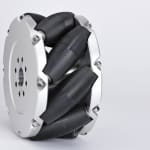
Specialty chemicals company Lanxessis well prepared for the planned EU restriction on diisocyanates. With its Low Free (LF) technology, polyurethane (PU) prepolymers can be produced that contain less than 0.1 percent by weight of free isocyanate monomer. LF prepolymers are therefore not affected by the upcoming European restriction proposal for diisocyanates and can be used without new restrictions as before.
In May 2018, the European Chemicals Agency (ECHA) presented its position paper on the planned restriction procedure for diisocyanates. It can be assumed that the European Union will adopt the proposed regulations on health protection in the coming months. It is becoming apparent that the restrictions will have a significant impact on work and operational processes. In summary the restrictions will apply to the handling of basic diisocyanates such as MDI (methylenediphenyl diisocyanate), TDI (toluene diisocyanate) or HDI (hexamethylene diisocyanate), as well as conventional two-component (2K) PU systems and PU prepolymers whose free diisocyanate monomer content exceeds 0.1 percent by weight.
Complex certifications
The restriction procedure provides for binding and verifiable technical measures to improve safety and occupational health. Above all, companies must train their employees in the safe handling and use of diisocyanate-containing materials and provide evidence of this in the form of a certificate. The training is especially complex, because it becomes more and more extensive with growing extent of exposure and has to be repeated every four years. Around five million employees along the entire value chain of the PU industry are affected – from manufacturers and importers to system houses, formulators and processors.
CAS applications benefit above all
Adiprene LF prepolymers from LANXESS are suitable material alternatives that minimize exposure to free isocyanate and thus circumvent the new restriction process. They are manufactured using LF technology and contain less than 0.1 weight percent free diisocyanate. Automotive manufacturers in particular are currently showing great interest in CAS material solutions with low residual monomer content. They want to avoid extensive employee training and focus explicitly on product solutions that have a low hazard classification.
Purification step reduces diisocyanate content in prepolymer
Adiprene LF prepolymers are manufactured using LF technology and contain less than 0.1 weight percent free diisocyanate. This very low level is obtained by vacuum distillation immediately following the initial polyaddition to build up the prepolymers. The stripping step separates unreacted diisocyanate monomer from the prepolymer. The technology can be applied to a wide variety of diisocyanate prepolymers, including MDI-based systems. Due to the residual diisocyanate being less than 0.1 percent, these LF prepolymers are not classed as hazardous, and respective labelling requirements are avoided.
Better performance of end products
Adiprene LF prepolymers not only offer advantages in terms of health protection, industrial hygiene and safety. Compared to similar standard prepolymers, they also result in technically higher-performance PU end products. This is because the polymer morphology can be controlled more precisely using the LF technology. This results in a highly structured phase segregation between crystalline hard and amorphous soft segments, which is manifested in better physical and mechanical properties of the PU product. For example, PU systems can be formulated that are very elastic, and tear-resistant as well as displaying high tensile strength. In addition, a narrower molecular weight distribution and a more pronounced physical cross-linking are attained. The viscosity of the prepolymers can be varied widely at a constant isocyanate content (NCO content) and can be adapted to processing conditions, equipment and desired product properties. In the case of coating systems, for example, the wetting behavior and coverage rate during application can be optimized in this way.




